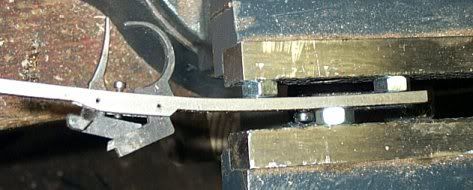Just out of curiosity, how do you know the LOP to acquire if you don't have the trigger in ? Or are you just taking what the LOP they gave you & going with it ? :hmm:
Most would do it like this:
Get the Lock in place.
Then barrel where it needs to go.....
Then when you have the barrel in place & pinned to the stock, tang should be in & down & where you want it.
Then do the trigger, then the tang bolt.
Then LOP set for the buttplate.
Keith Lisle
Most would do it like this:
Get the Lock in place.
Then barrel where it needs to go.....
Then when you have the barrel in place & pinned to the stock, tang should be in & down & where you want it.
Then do the trigger, then the tang bolt.
Then LOP set for the buttplate.
Keith Lisle










